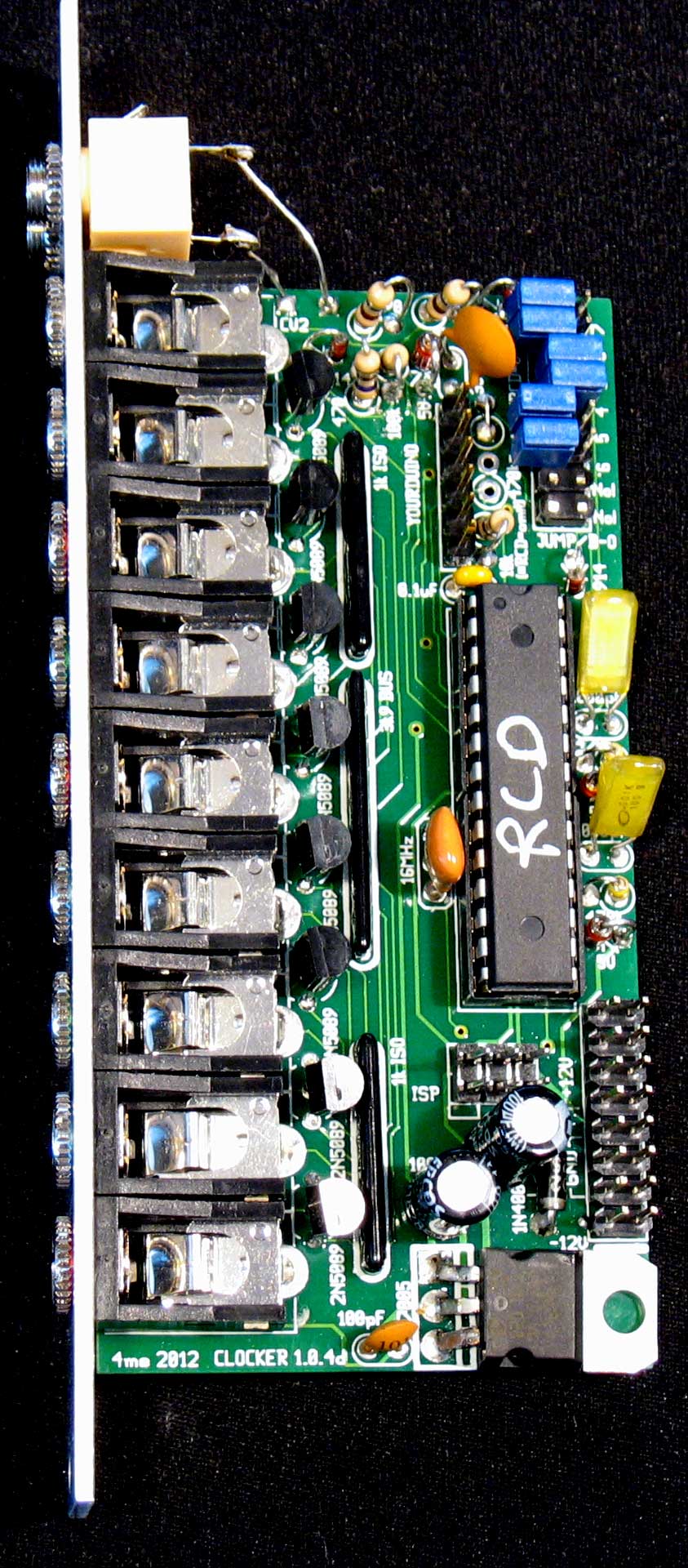THIS IS A FULL DIY KIT
This module is performing real-time LPC synthesis to produce intelligible voice or … not if you choose to.
The module produces sounds in 3 major modes: Speech, Repeat and VCO.
In Speech mode, the speech starts with a gate signal and complete before waiting for a new gate signal. The speech has the priority.
In Speech mode, the speech starts with a gate signal and complete before waiting for a new gate signal. The speech has the priority.
In Repeat mode, the speech starts and stops with the gate signal going high or low. The gate has the priority and the speech repeats while the gate is high. This mode is very useful to create crazy rhythms.
In VCO mode, the LPC engine loops while the gate is high, producing steady notes. The VCO mode can also produce sound using white noise instead of tones, making strange throat sounds.
The sound synthesis can be altered via CV signals to affect pitch, speed, bending.
Talko is an Arduino-based synthesizer developed under open-source hardware and software.
Its firmware can be updated via the onboard USB port.
The module can be powered via USB if needed.
The PCB has a breakout section connected to 4 of the ATmega328p free pins for hacking (included A4 & A5 for the I2C bus)
Technical details
- Format: Eurorack
- Width: 10hp
- Depth: 30 mm skiff friendly
- Power: + 12V: 65ma . Talko can also be powered via USB when using a jumper. audio: un-filtered 5V PWM carrier at 62500 Hz, the output is protected against over or under voltage by clipping from 0 to +5V
- Inputs: protected against over or under voltage by clipping from 0 to +5V
- CV attenuators potentiometer on each CV entry
Banks
Talko can process 14 sound banks or functions:
0: Digits (from 0 to 9) male voice
1: Digits (from 0 to 9) female voice
2: Spell the Alphabet
3: Nato alphabet
4: Vocabulary
5: Big numbers
6: Voltmeter (reading the CV voltage)
7: Frequency meter (just saying “Hertz” instead of “Volts”)
8: Counter (each gate trigger increments the counter while any cv change on the Sound entry resets it)
9: Number radio (each gate trigger a 4 number sequence while any change on the Sound entry trigger a new “transmission”)
10: Timer since cv reset (each gate triggers saying the time in minutes/seconds while any cv change on the Sound entry resets the clock to zero)
11: Random vocabulary (60 words, see manual for details)
12: Sentences (12 sentences, see manual for details)
13: French Vowels “a e i o u”
14: French Digits (from 0 to 9) male voice
This module is performing real-time LPC synthesis to produce intelligible voice or … not if you choose to.
The module produces sounds in 3 major modes : Speech, Repeat and VCO.
Talko is an Arduino-based synthesiser developed under open-source hardware and software. (license CC-BY-SA)
Its firmware can be updated via the onboard USB port.
Please note that building & coding this module requires minimum Arduino knowledge like installing a com port, installing libraries & uploading code.
Assembly
The kit contains everything you need to build your own Talko 1.2 : the panel, the PCB, the components, the knobs and the power cable.
The kits include a populated PCB with all SMD installed .
The bootloader is already flashed to the ATmega338p.
The assembly manual can be found here : https://github.com/deladriere/euro-modules/wiki/Assemble-Talko
User Manual
The user manual can be found here : http://www.polaxis.be/wp-content/uploads/2016/05/Talko-Manual-1_2.pdf
Technical support
https://github.com/deladriere/euro-modules/tree/master/Talko
 It contains all components required for a complete build, right down to rack screws and power cable. We selected and used the high quality parts as specced by Random*Source.
It contains all components required for a complete build, right down to rack screws and power cable. We selected and used the high quality parts as specced by Random*Source. The Serge Dual Universal Slope Generator (DSG) is probably the most versatile module of a Serge Modular system, incorporating a wide range of functions for both CV and audio. Some functions for which one Slope Generator can be used: VC Transient Envelope Generator, VC LFO, VC Portamento device, Envelope Follower (Detector), VC Pulse Delay (Monostable), Sub-Harmonic Series Generator (Divider), Audio Oscillator with variable waveform symmetry (saw to triangle), Non-Linear Audio Processor (low-fidelity VCF).
The Serge Dual Universal Slope Generator (DSG) is probably the most versatile module of a Serge Modular system, incorporating a wide range of functions for both CV and audio. Some functions for which one Slope Generator can be used: VC Transient Envelope Generator, VC LFO, VC Portamento device, Envelope Follower (Detector), VC Pulse Delay (Monostable), Sub-Harmonic Series Generator (Divider), Audio Oscillator with variable waveform symmetry (saw to triangle), Non-Linear Audio Processor (low-fidelity VCF).


